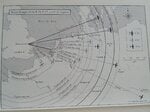P-39 Expert
Non-Expert
The P-39N outclimbed any standard production P-38F/G or P-47B/C/D up toSomebody might want to tell that to some test pilots. With the big prop and water injection a P-47 could outclimb a FW 190 at low altitude (lets not even mention high)
the dividing line for turning seemed to be 250mph, below that the FW 190 could out turn the P-47, above that it couldn't .
Of course neither the P-39 or P-40 could do what the P-38 and P-47 could do even if they weren't quite as good as the P-51.
P-39N substantially outclimbed any production P-38F/G or P-47B/C/D up to 26000', above which combat was unlikely. Wouldn't outclimb the P-51B/C.Somebody might want to tell that to some test pilots. With the big prop and water injection a P-47 could outclimb a FW 190 at low altitude (lets not even mention high)
the dividing line for turning seemed to be 250mph, below that the FW 190 could out turn the P-47, above that it couldn't .
Of course neither the P-39 or P-40 could do what the P-38 and P-47 could do even if they weren't quite as good as the P-51.

